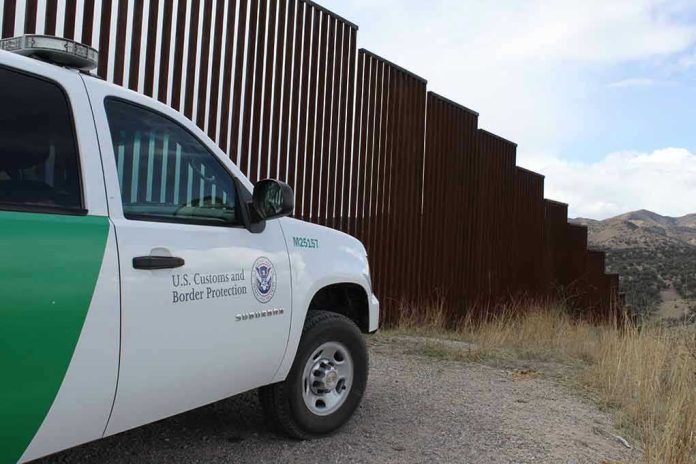
In a dramatic shift in U.S. border policy, the southern border has seen a significant reduction in encounters, with a drop from 189,359 in March 2024 to just 11,017 in March 2025, following a series of executive orders and policy changes initiated by the Biden administration and continued under the Trump administration in 2025.
At a Glance
- The number of encounters at the U.S. southern border has plummeted to its lowest in three years, reflecting a major policy shift.
- President Trump’s administration has implemented executive orders aimed at securing the border, including the establishment of physical barriers and enhanced enforcement.
- The House has approved a significant funding package for border security, including $12 billion for states supporting immigration enforcement.
Policy Shifts and Executive Orders
The Trump administration has moved swiftly to address what it describes as an “invasion” at the southern border, signing several executive orders on Inauguration Day, January 20, 2025. These orders focus on enhancing border security through physical barriers, deterring illegal entry, and detaining those suspected of violating federal laws until they can be removed from the U.S.[1][4]. The policy emphasizes cooperation with state and local law enforcement to enforce federal immigration priorities[4].
Funding for Border Security
In May 2025, the House Rules Committee approved a manager’s amendment adding $12 billion for states supporting border-related immigration enforcement. Additionally, the Senate bill includes $10 billion for a “State Border Security Reinforcement Fund” to construct barriers and intercept unauthorized crossings, along with $3.5 billion for reimbursements to state and local governments for immigration-related enforcement costs[3]. However, the Parliamentarian ruled that these provisions initially violated reconciliation rules, necessitating clarifications to conform with existing statutes[3].
Impact and Challenges
The significant drop in border encounters is attributed to these policy changes, which have restricted access to the border more than ever before[1]. However, the shift in policy has also paused grants for humanitarian needs of migrants and proposed their elimination in future fiscal years[3]. This approach has been controversial, with some arguing it prioritizes enforcement over humanitarian concerns.
Conclusion
The changes in U.S. border policy reflect a stark shift towards enhanced security measures, with a focus on physical barriers and enforcement. While these policies have led to a decrease in border encounters, they also raise questions about the balance between security and humanitarian needs.
Sources:
Trump’s 2025 Executive Orders: Reshaping Security on the Southern Border
Tracking 2025 Changes to U.S. Border Security Policy
What’s in the 2025 Reconciliation Bill So Far?
Securing Our Borders – The White House






